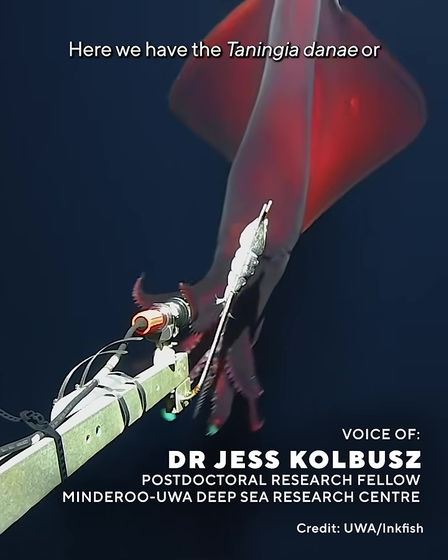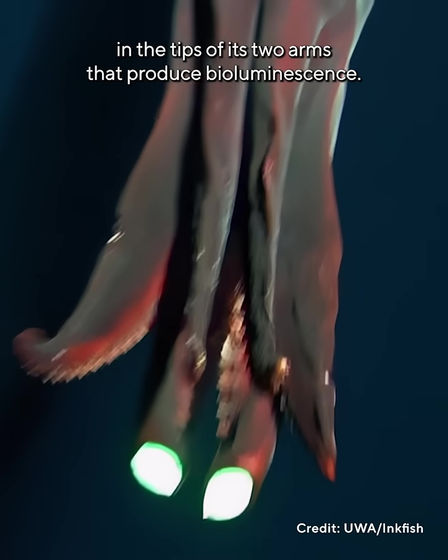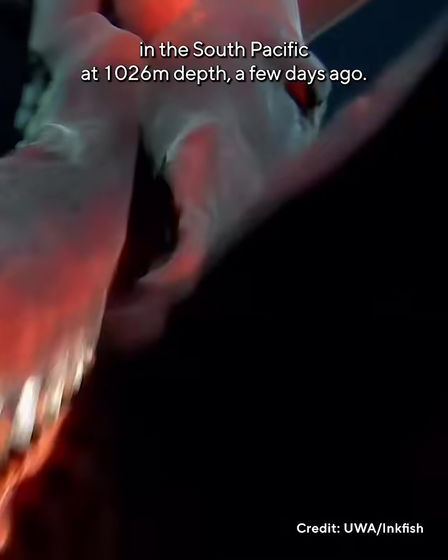A powerful movie is released in which a rare deep-sea squid with the world's largest luminous organ is attacked

Some creatures that live in the deep sea where sunlight does not reach use
Rare deep-sea squid filmed at depth
https://www.uwa.edu.au/news/article/2024/may/rare-deep-sea-squid-filmed-at-depth
Elusive 'octopus squid' with world's largest biological lights attacks camera in striking new video | Live Science
https://www.livescience.com/animals/squids/elusive-octopus-squid-with-worlds-largest-biological-lights-attacks-camera-in-striking-new-video
In May 2024, a research team from the University of Western Australia's Deep Sea Research Centre released extremely rare footage of a deep-sea squid (Taningia danae) in action.
Rare deep-sea squid caught on camera - YouTube
The video was taken by a free-falling baited camera dropped by a research team into the Samoa Strait in the South Pacific Ocean, where a large squid suddenly appeared out of the darkness at a depth of about 1,026 meters.

After latching onto the camera, the squid quickly flies away and disappears into the depths of the ocean.

In the footage from the camera of the bitten animal, you can clearly see the two large bioluminescent organs glowing.

The squid, thinking the camera was prey, spread its legs and attacked it.

Commenting on the footage, Heather Stewart from the University of Western Australia said: 'This 75cm-long squid thought the camera was prey and tried to scare us with its huge bioluminescent headlight. It then wrapped its arm around one of the other cameras, allowing us to capture the encounter in even more detail. We consider ourselves very lucky to have been able to witness this.'
The squid of the Octopoteuthidae family, to which the broad-headed squid belongs, has eight legs, as its name suggests. When they are born, they have ten legs, but as they grow, they lose two legs and end up with eight.
The individual of the Japanese spotted hawk moth photographed this time is 75 cm long, but the largest individual reported to date was a female that was 2.3 meters long. However, the most distinctive feature of the Japanese spotted hawk moth is not its body size, but its luminous organ, which can grow to the size of a human fist or a lemon.
This light-producing organ, the largest in the living world, is used to scare prey with a blinding flash, but it is also thought to be used to communicate with other individuals, and a 2017 study found that it may be able to control the patterns of its light using eyelid-like membranes.
The footage of a live broad-toothed squid is rare, and Deep Sea Research Centre director Alan Jamieson said: 'Most records of this squid have come from beached areas, accidental by-catch or examination of whale stomach contents. It is rare to be able to observe these incredible animals alive so their location, depth and behaviour all provide valuable information.'
Related Posts:







